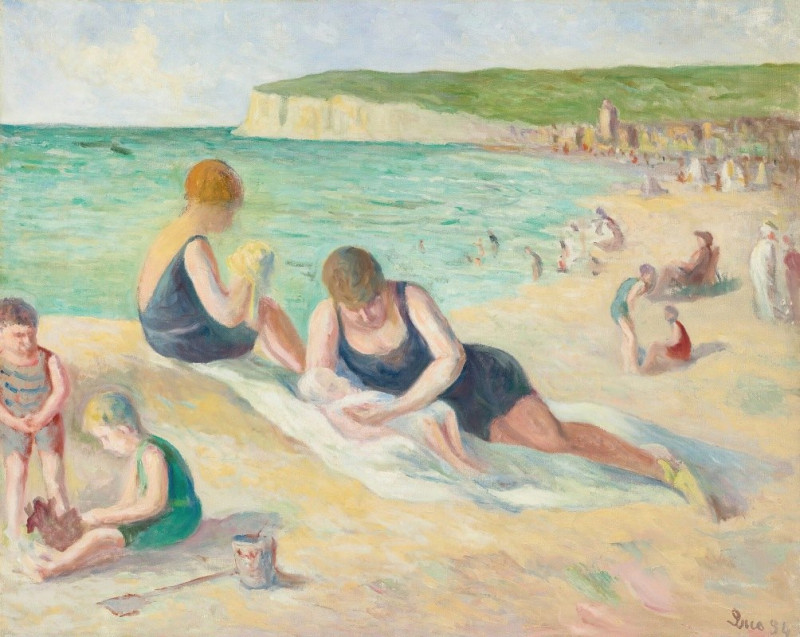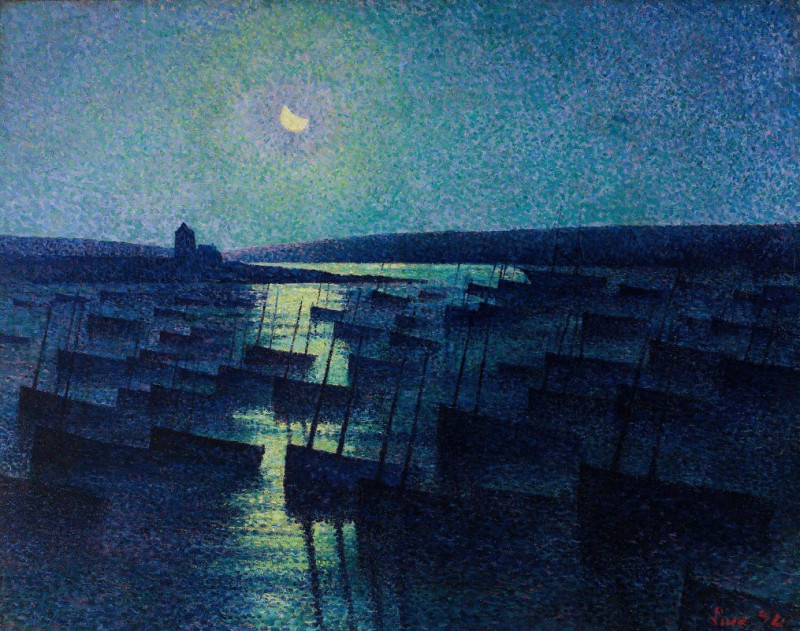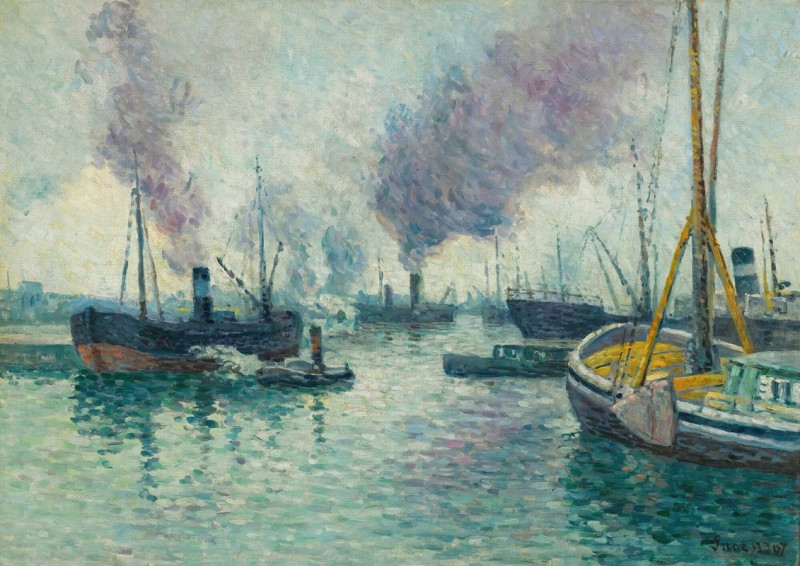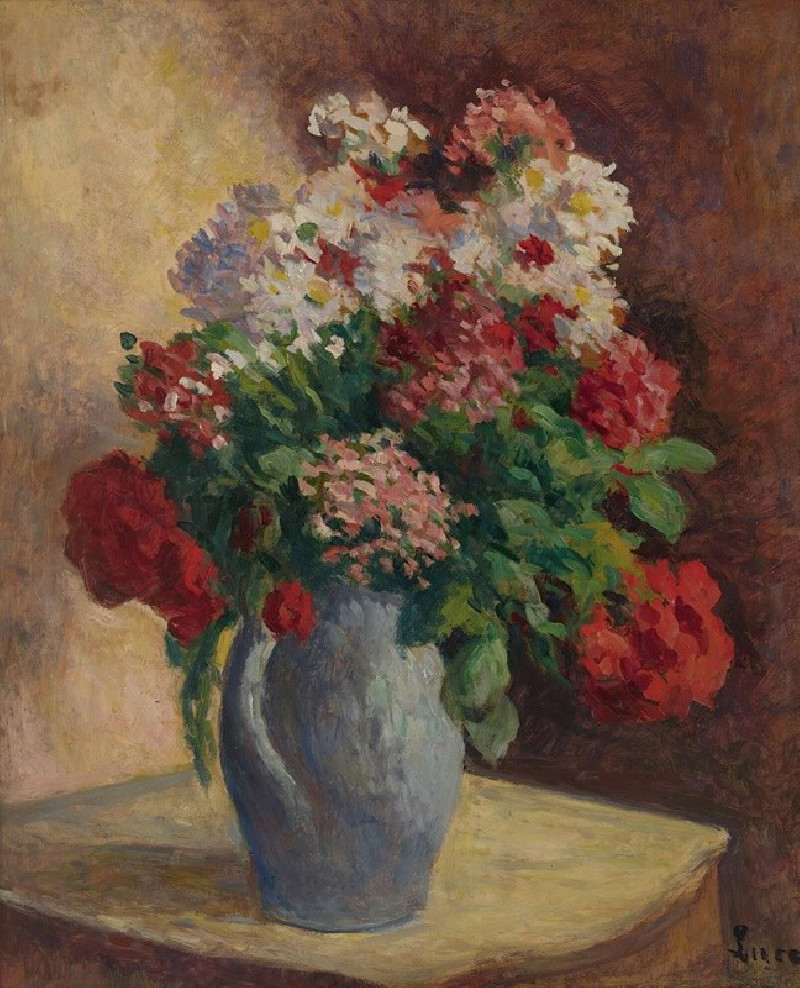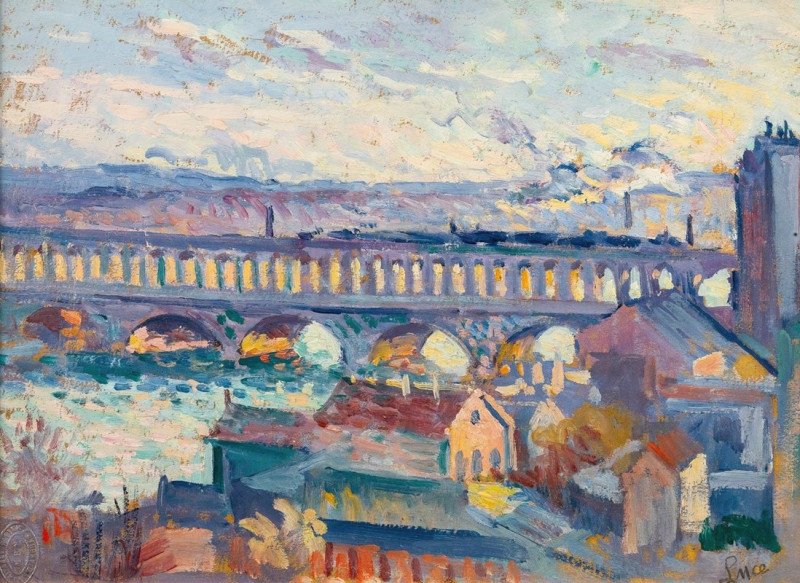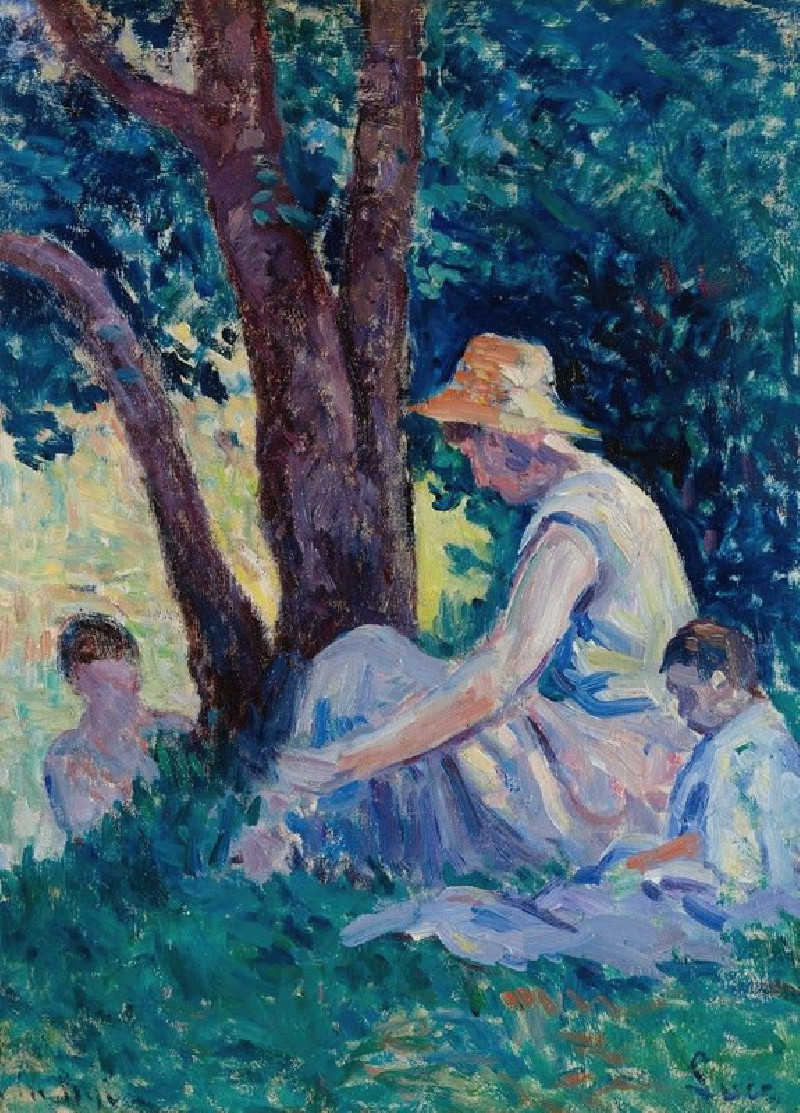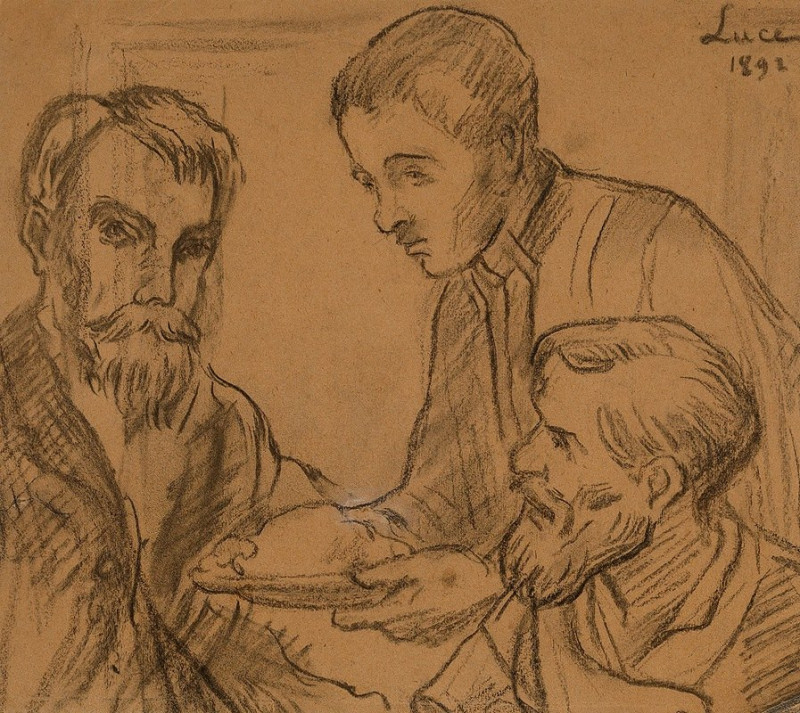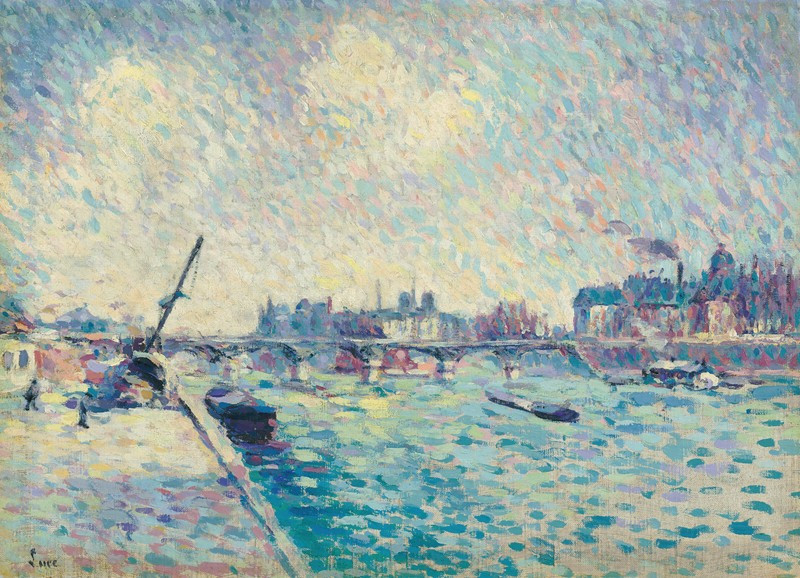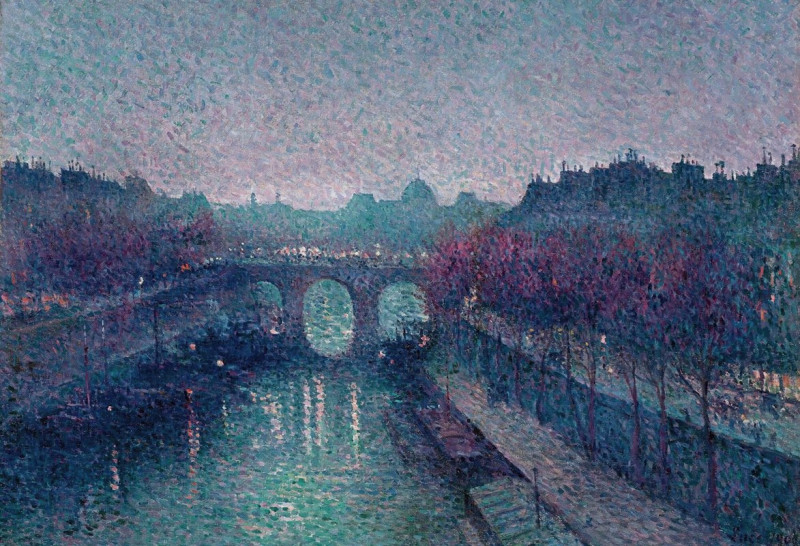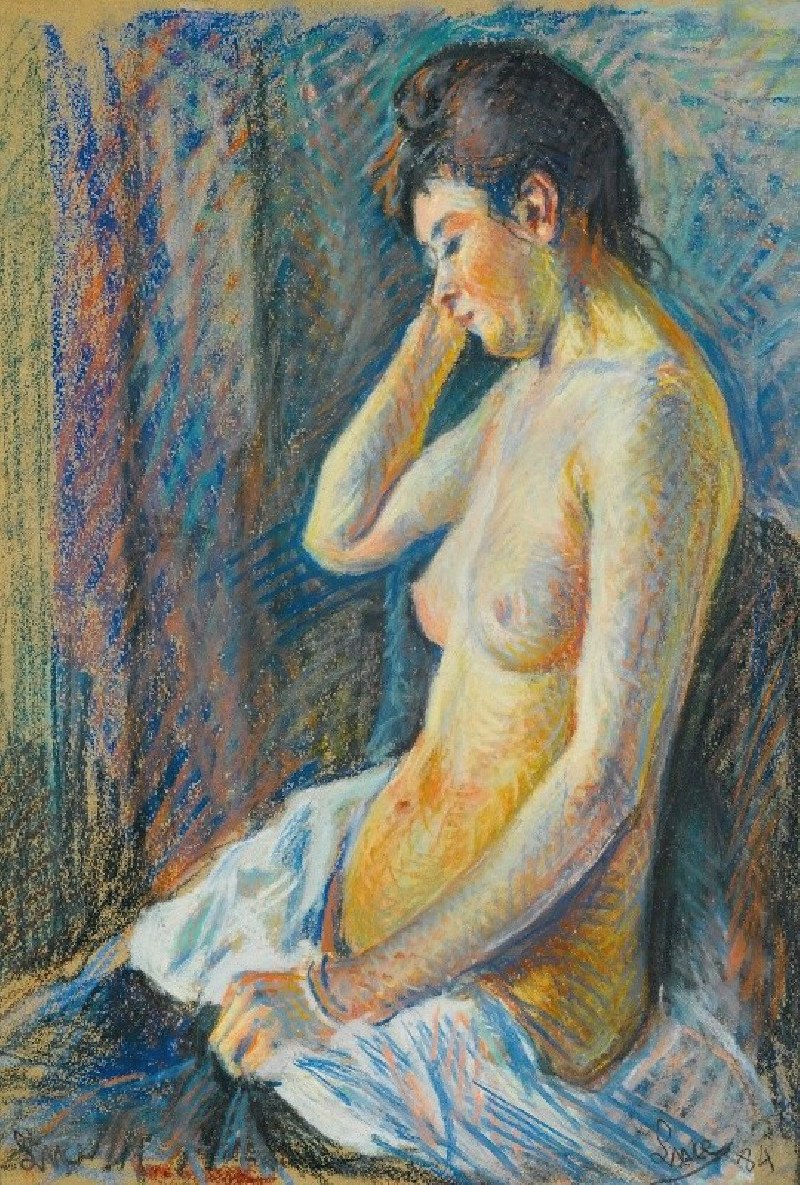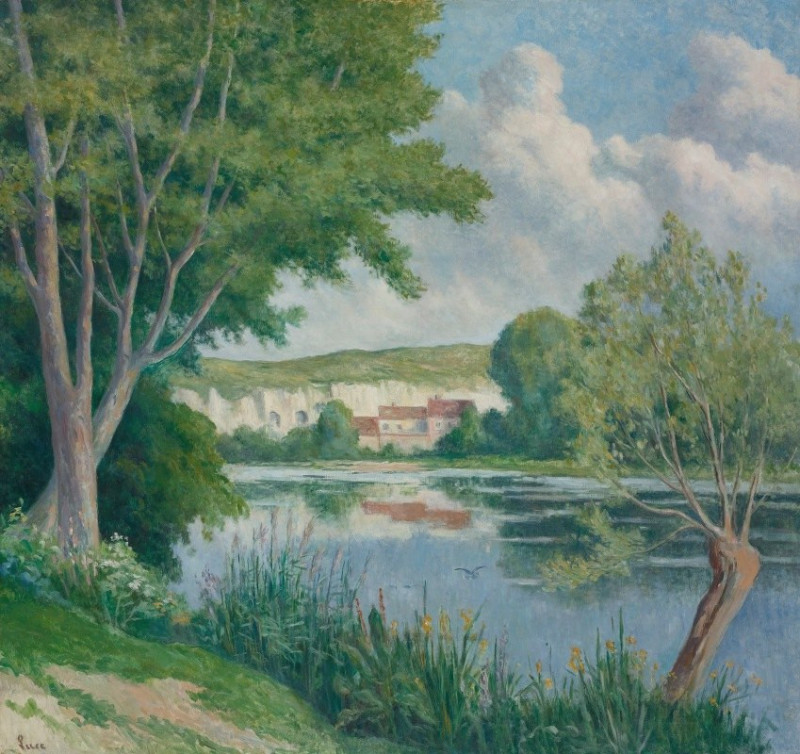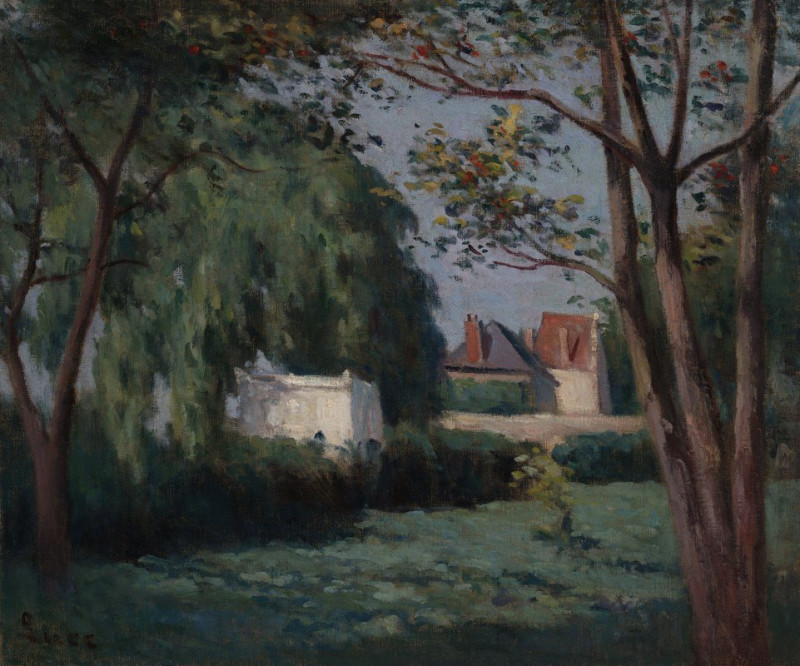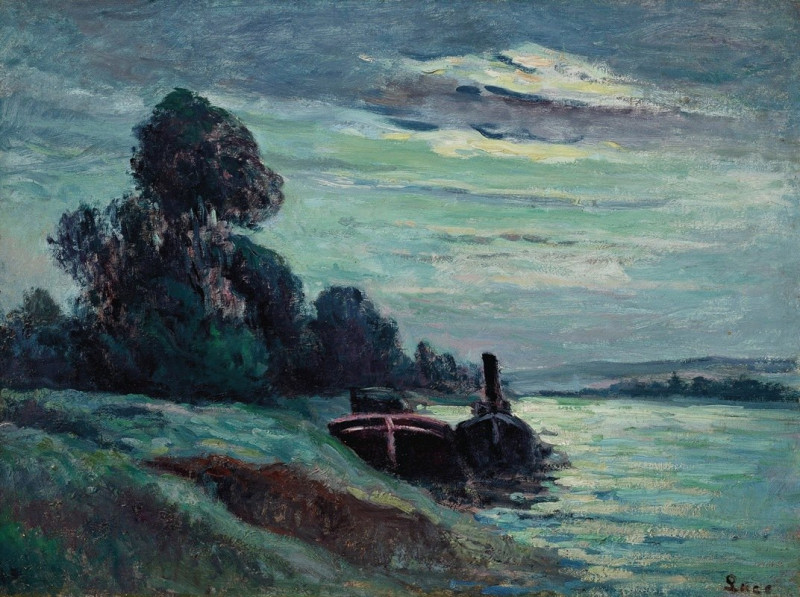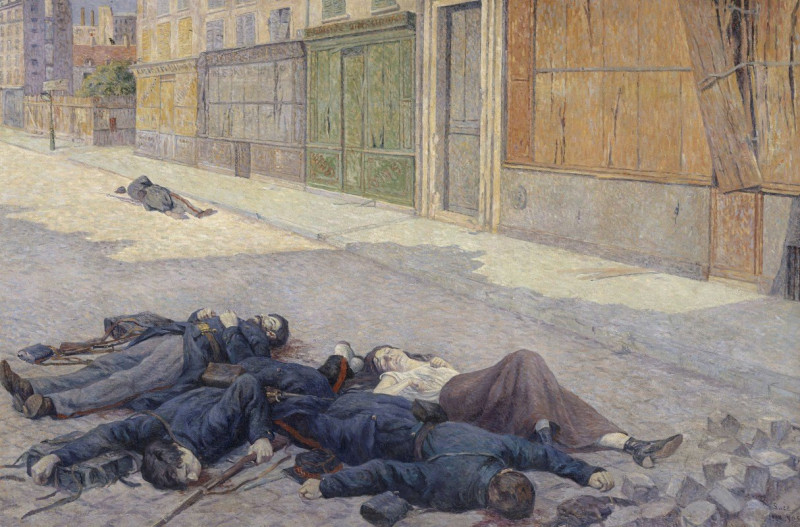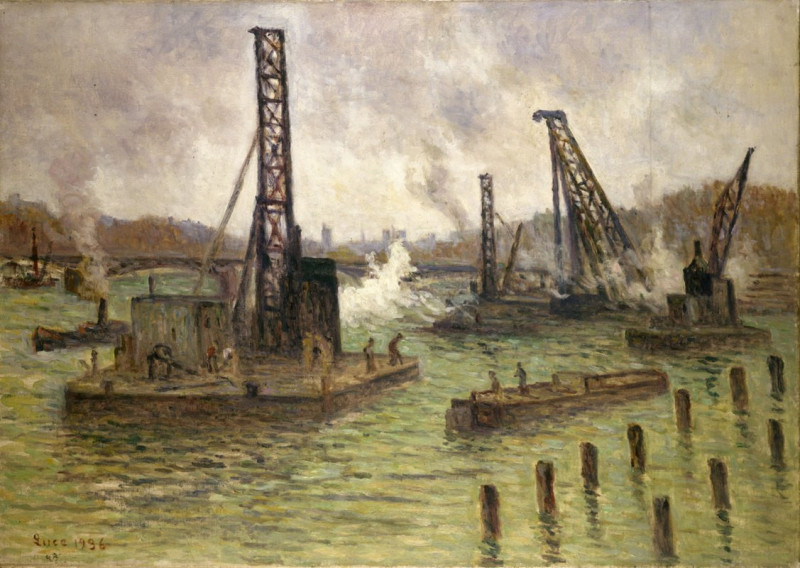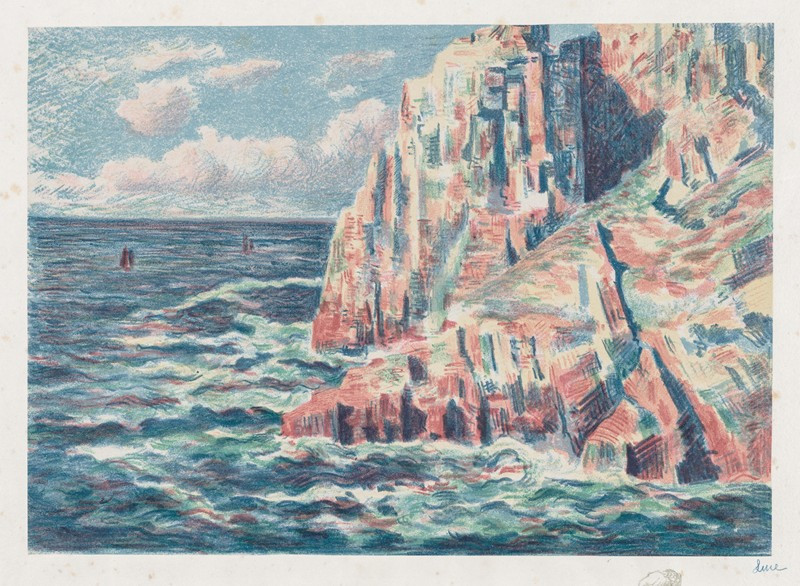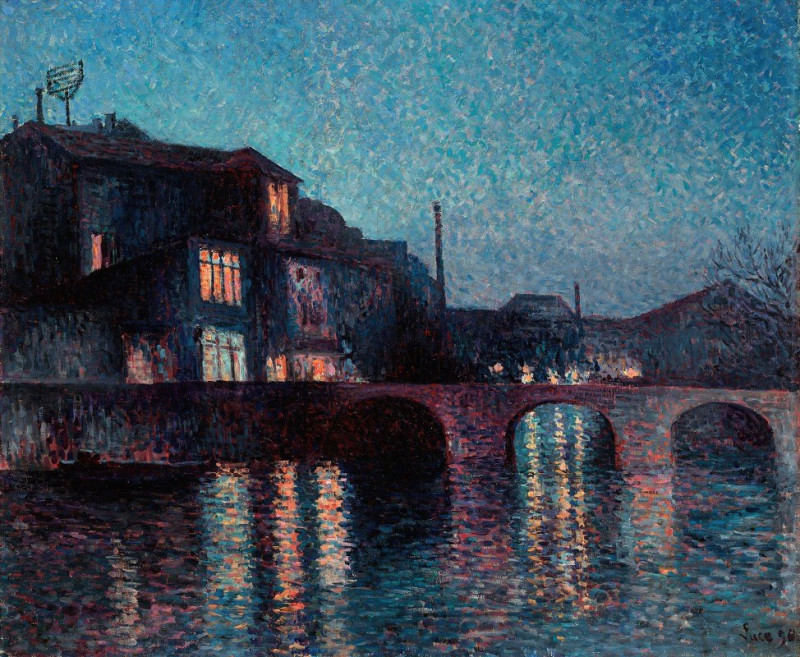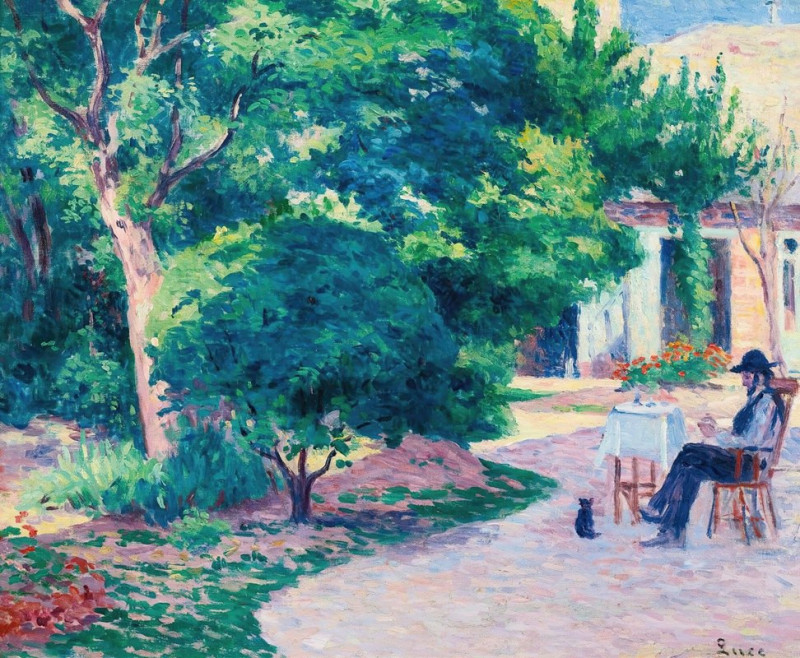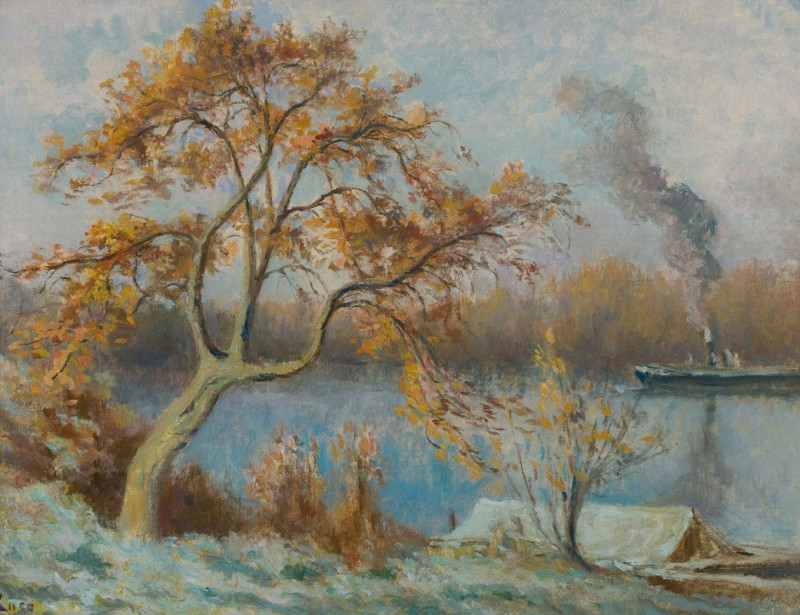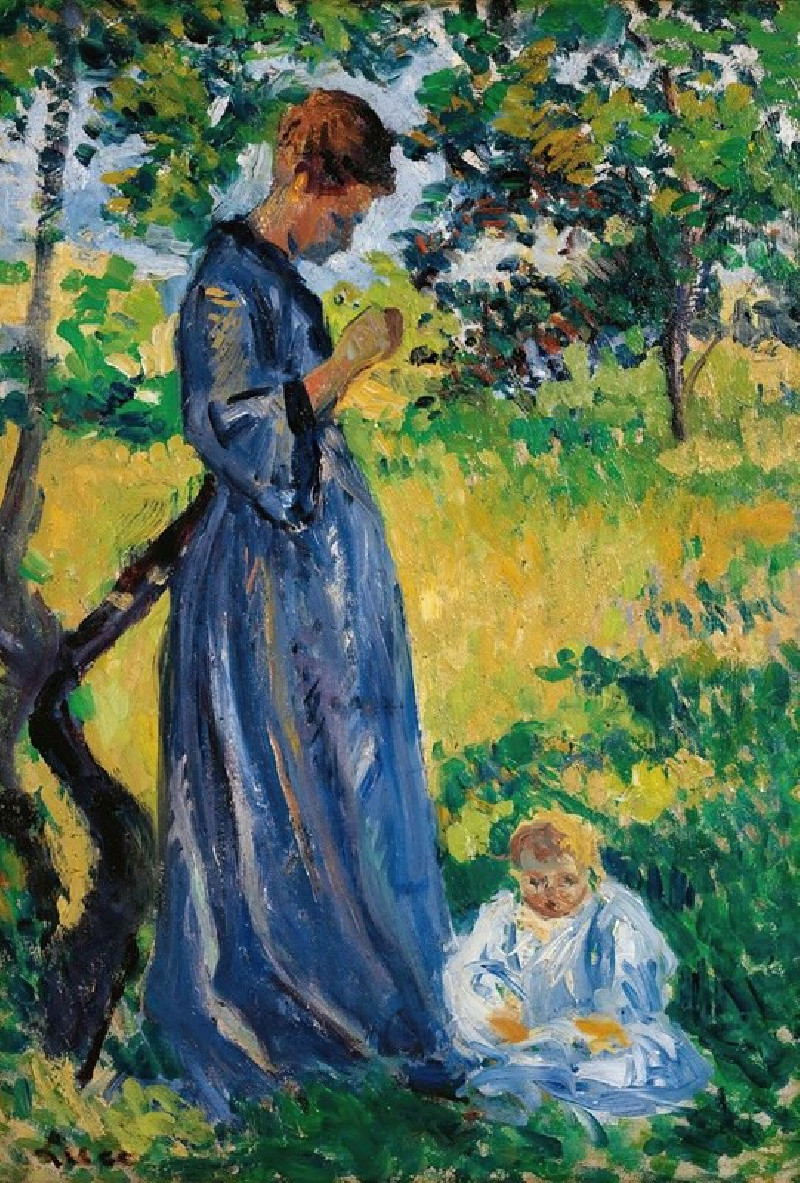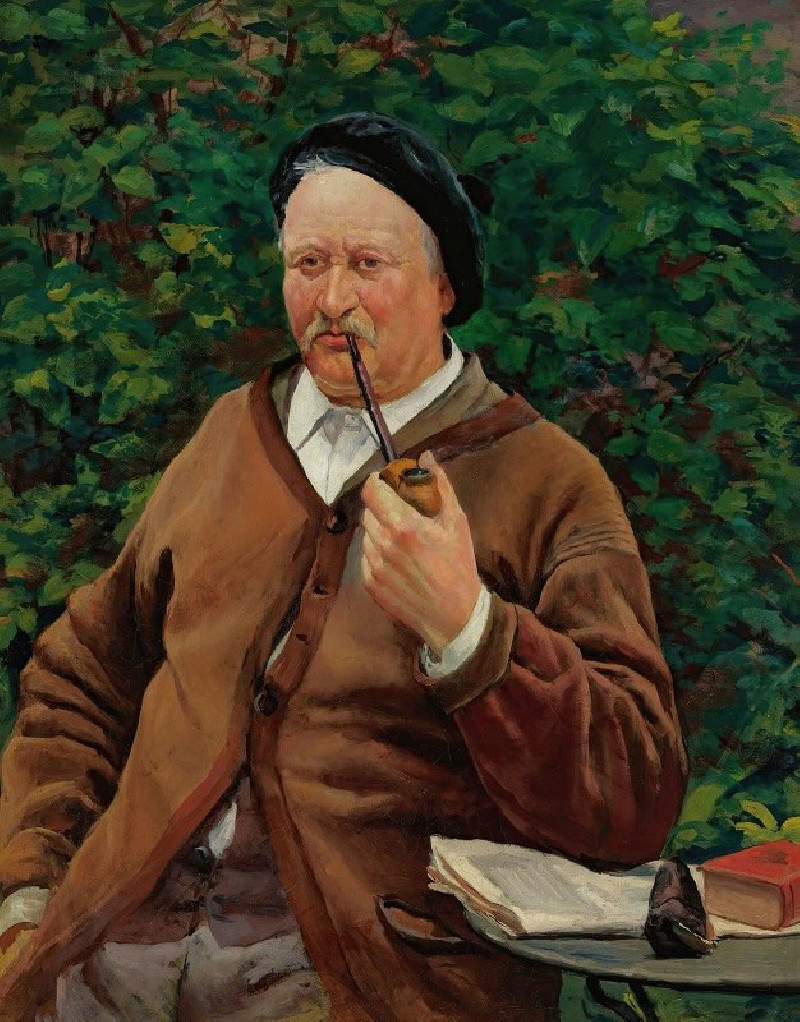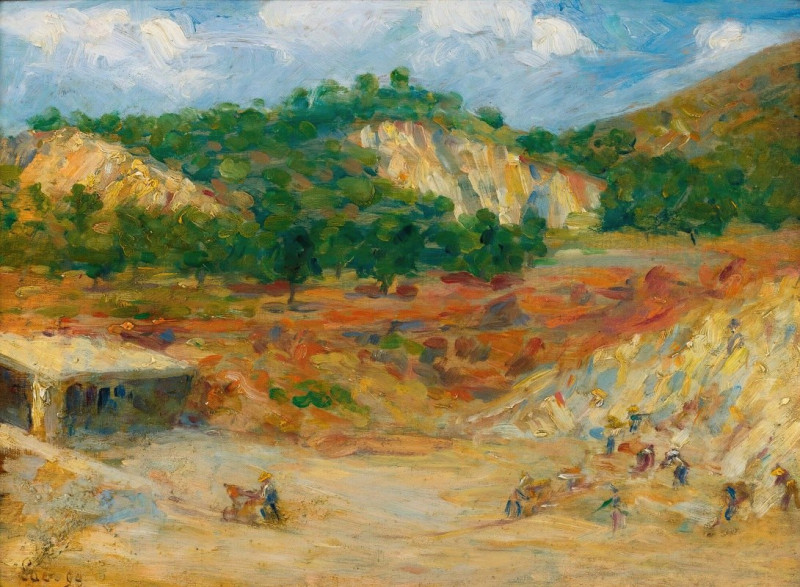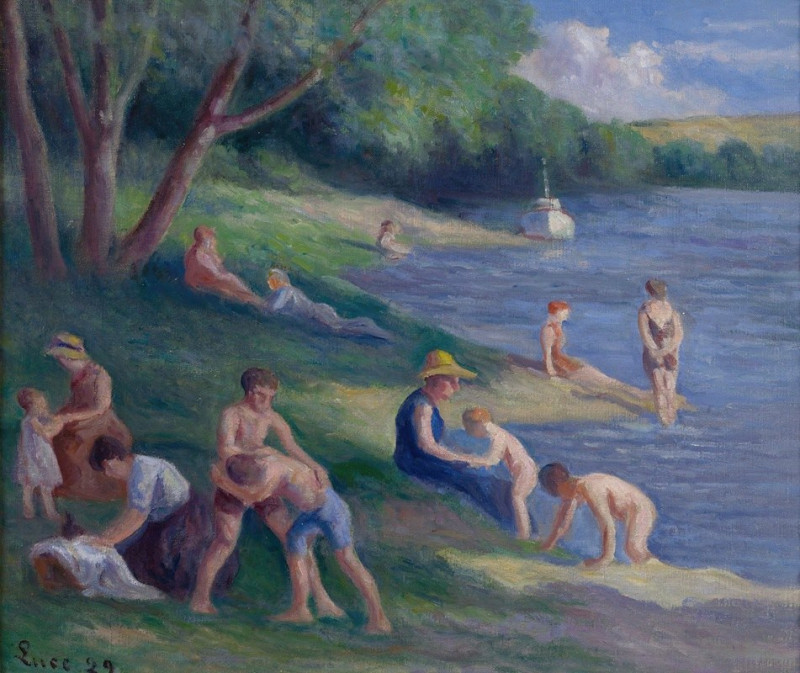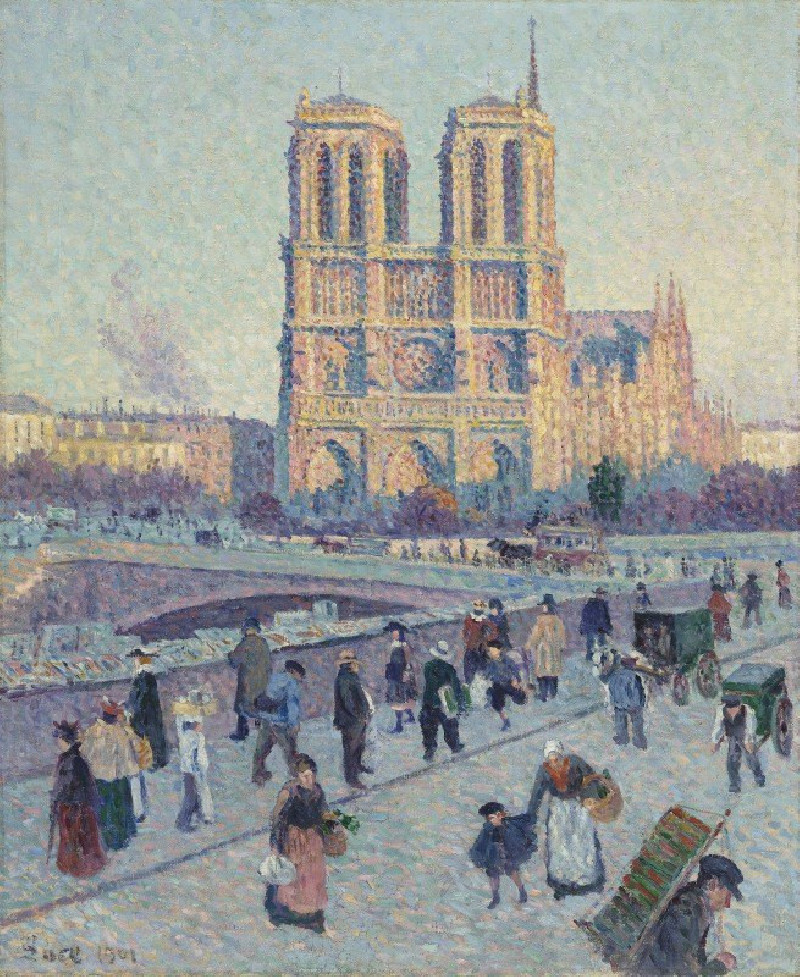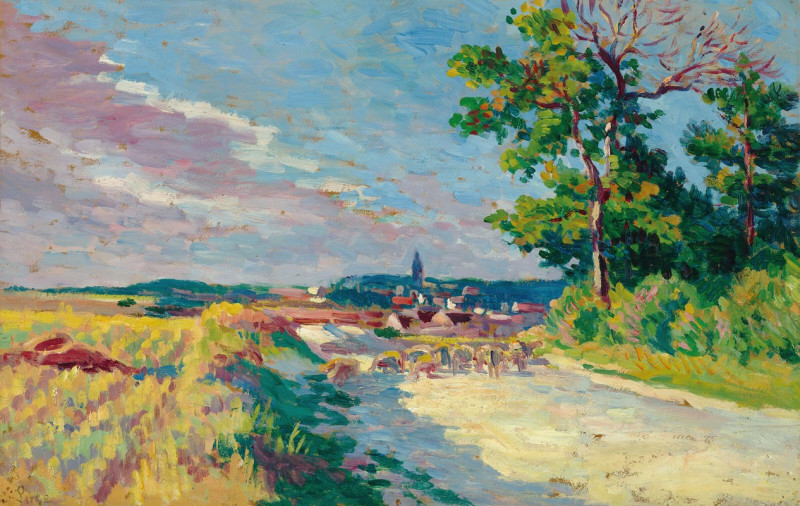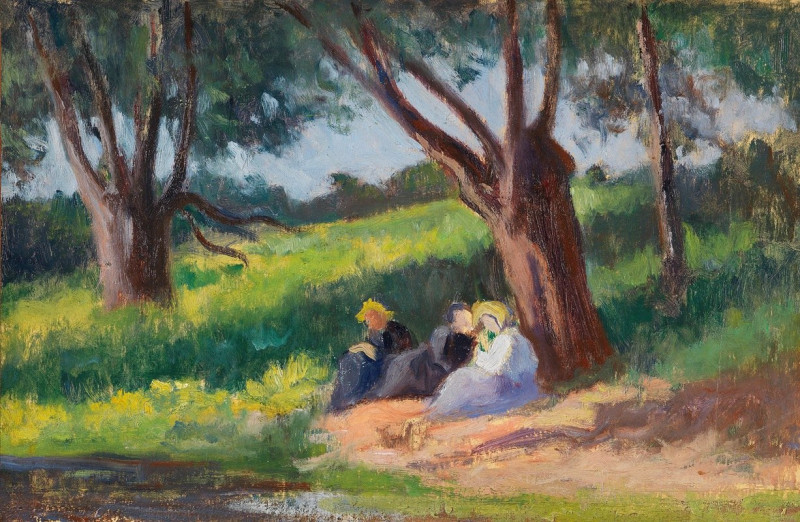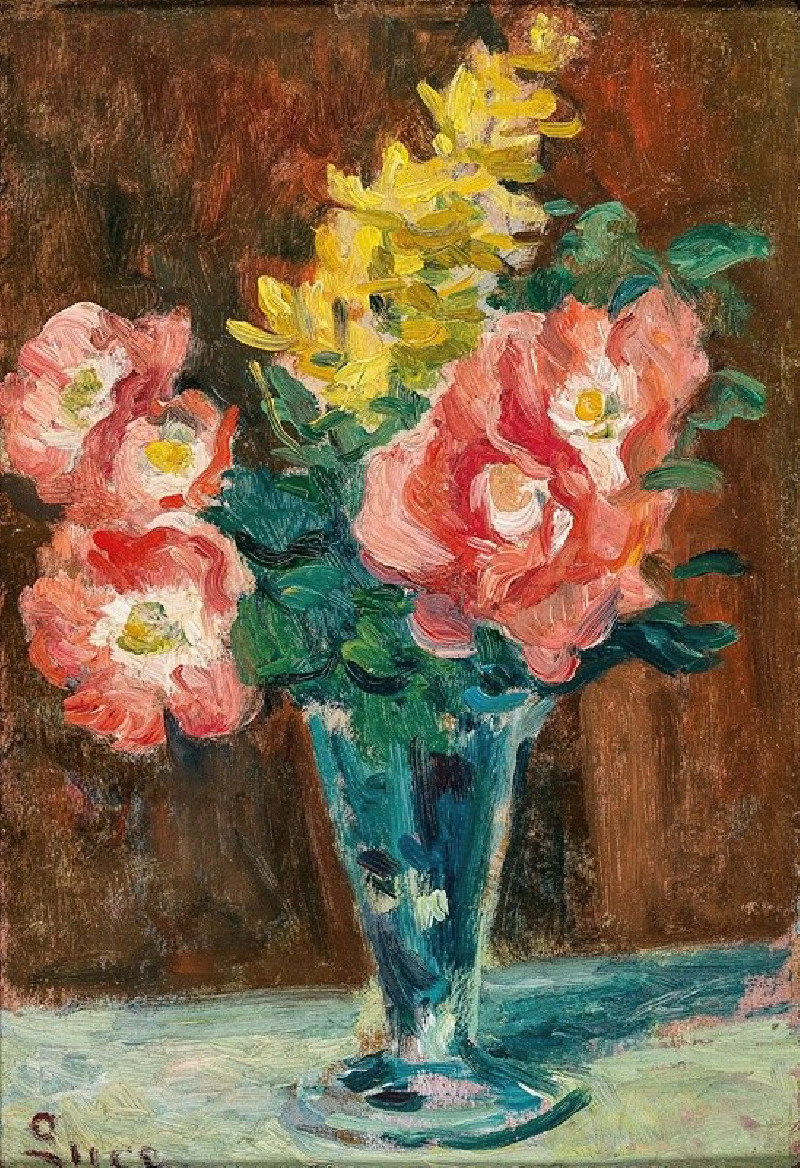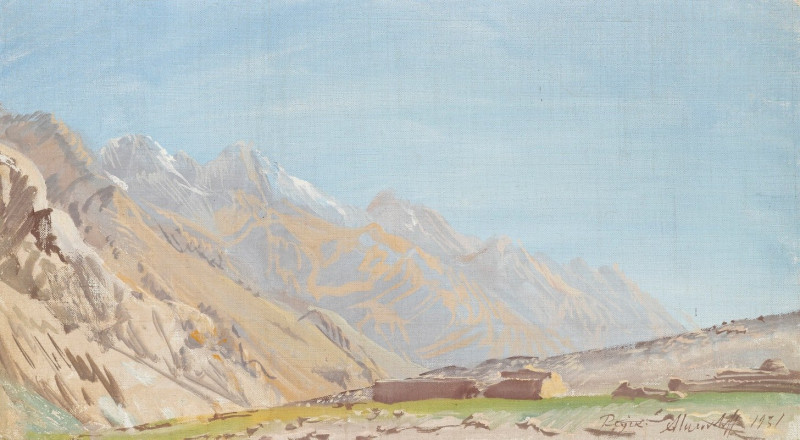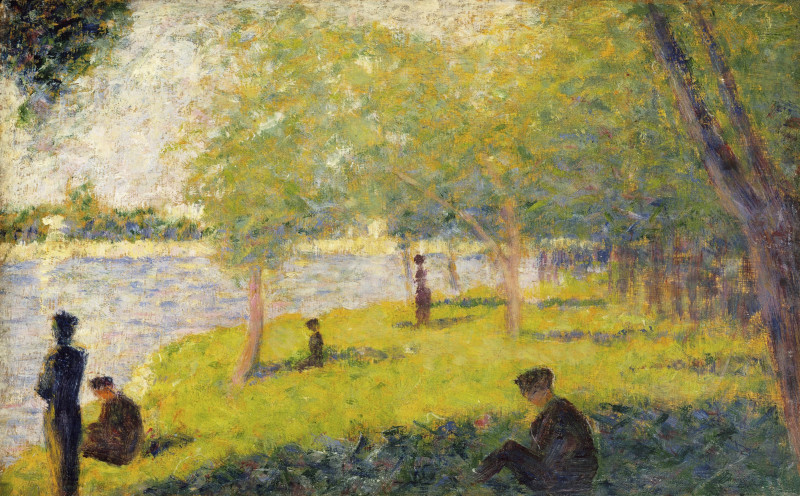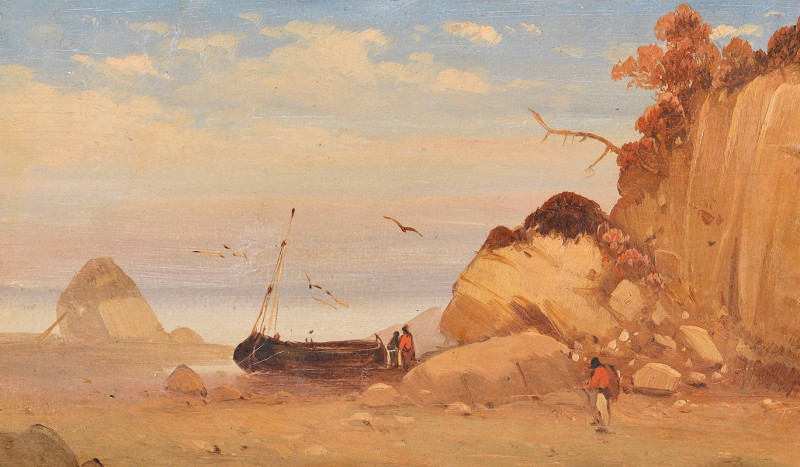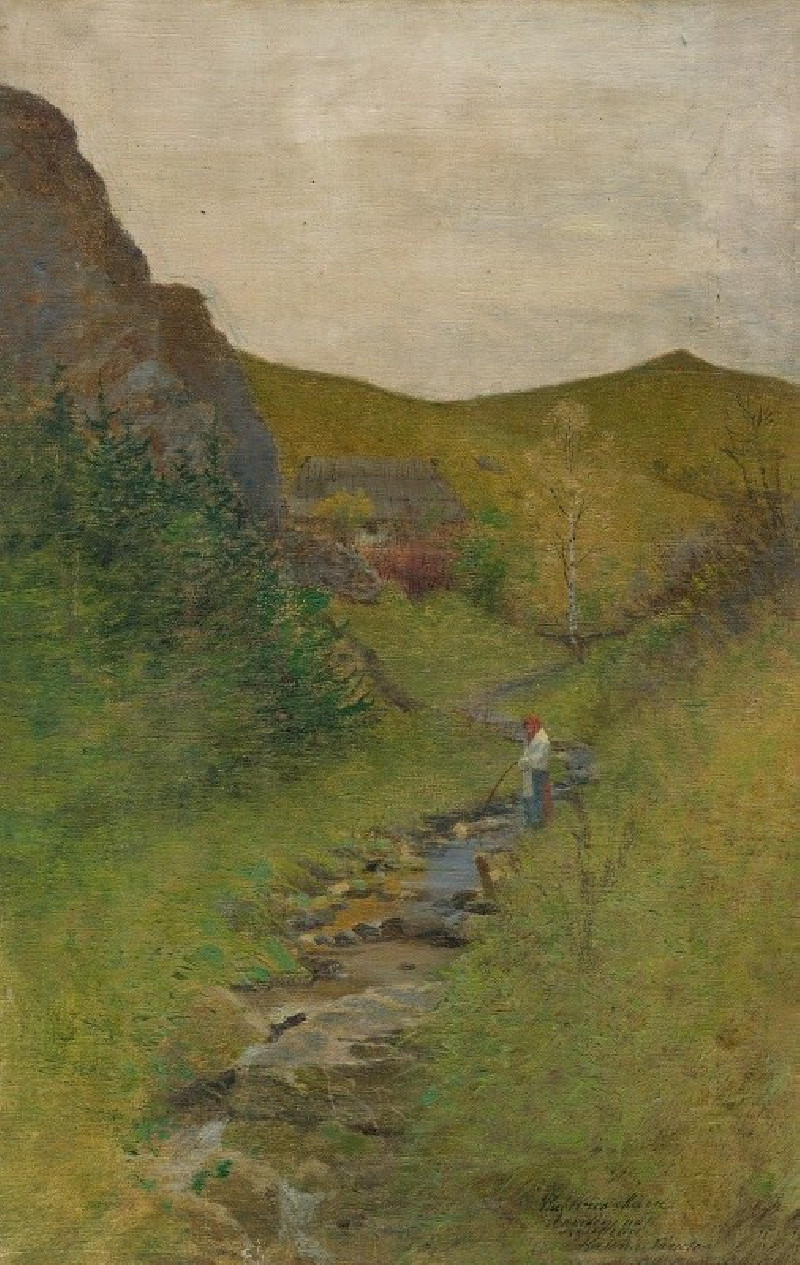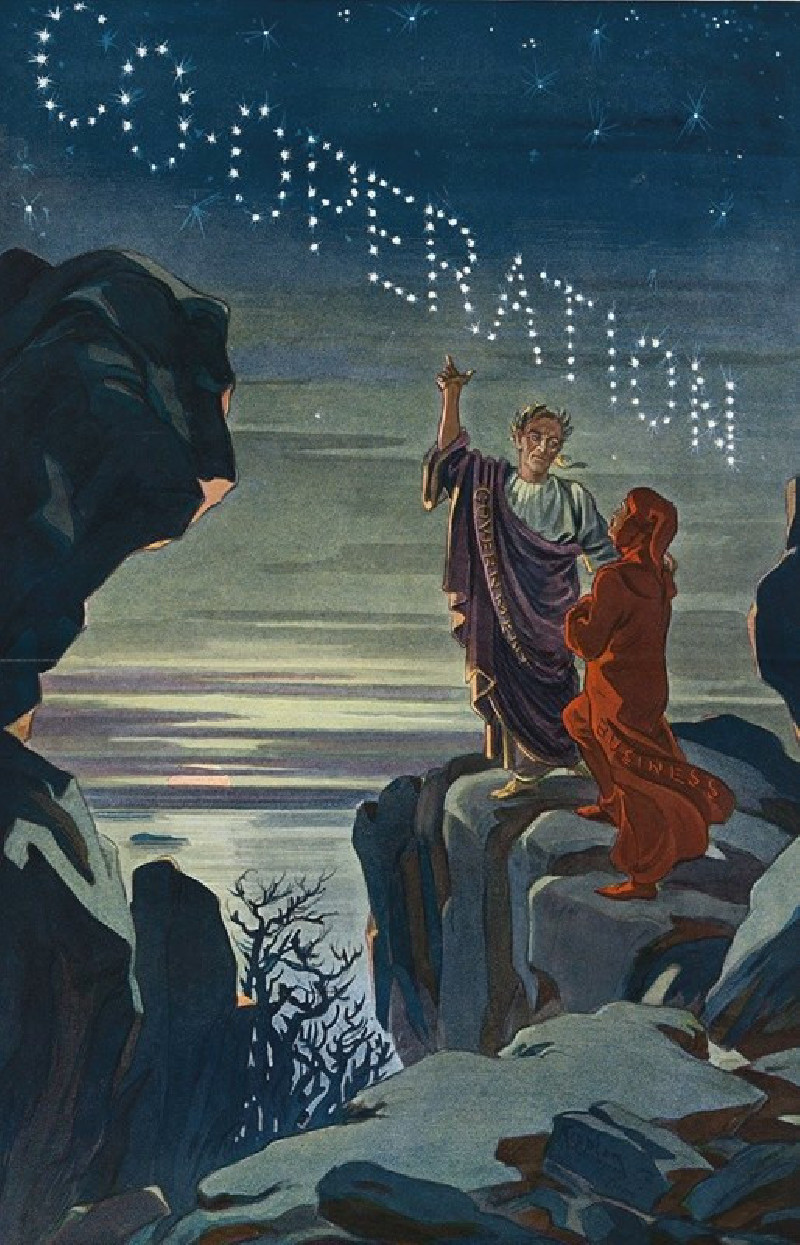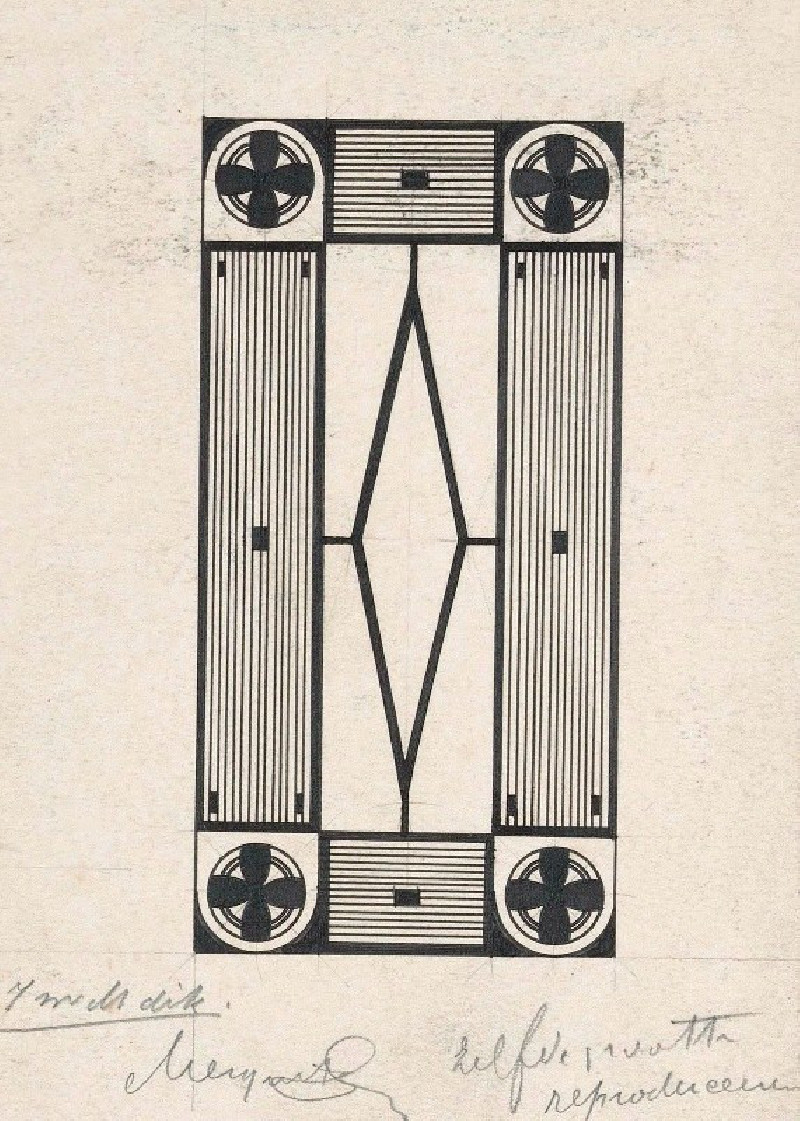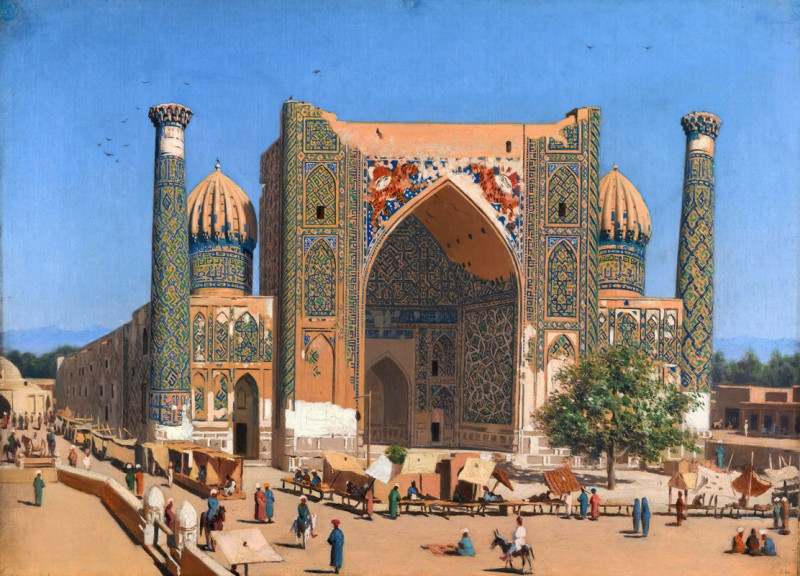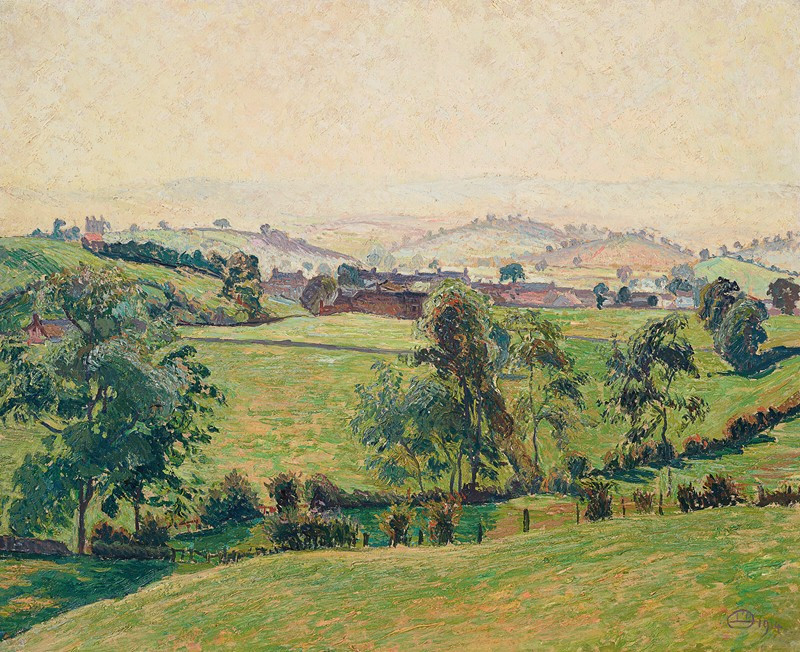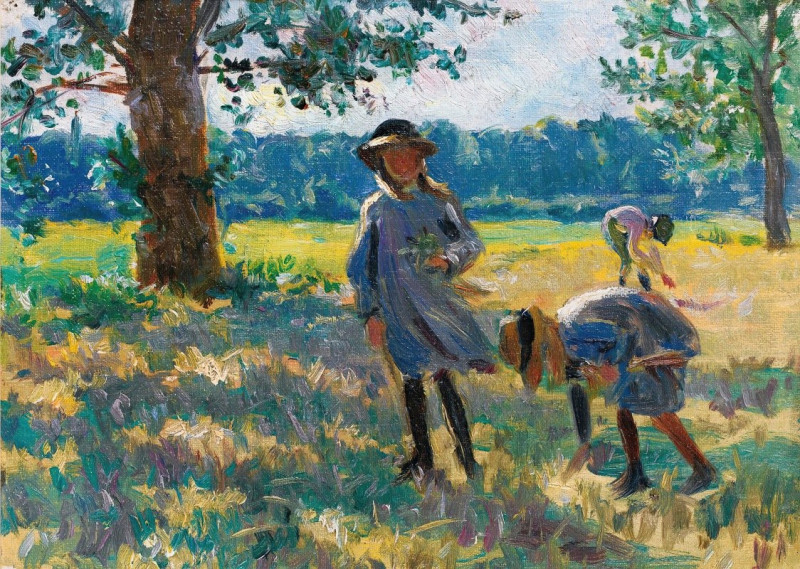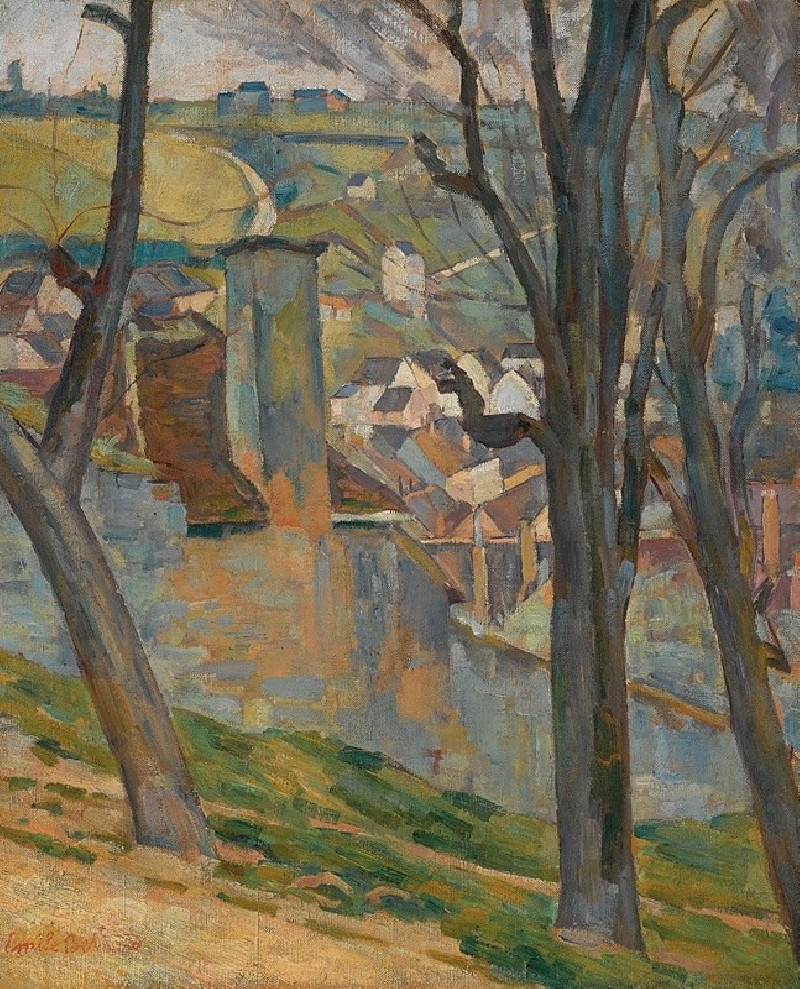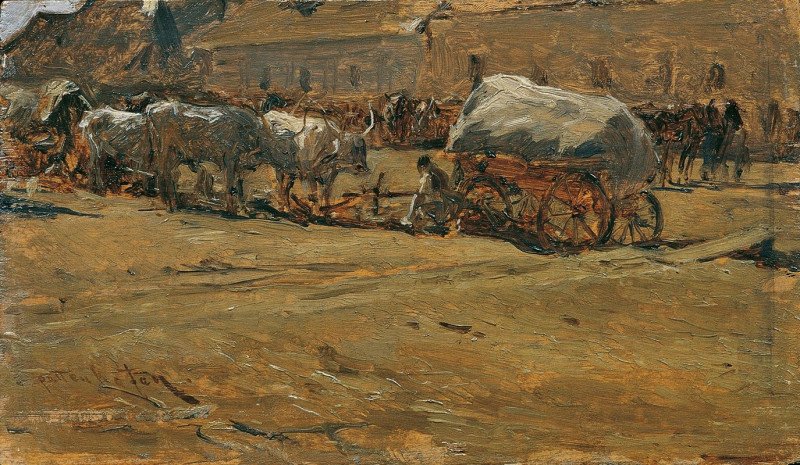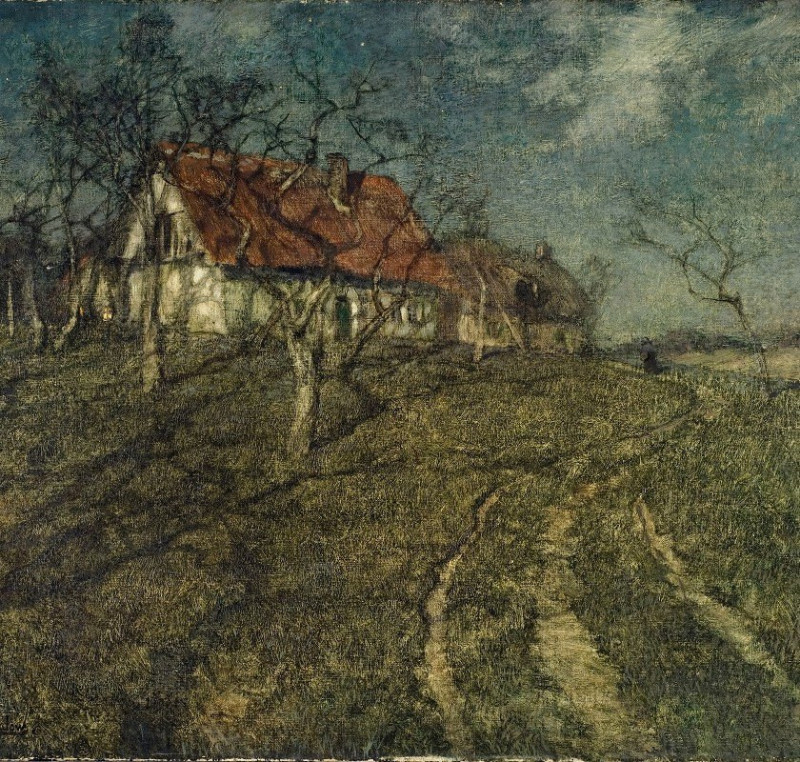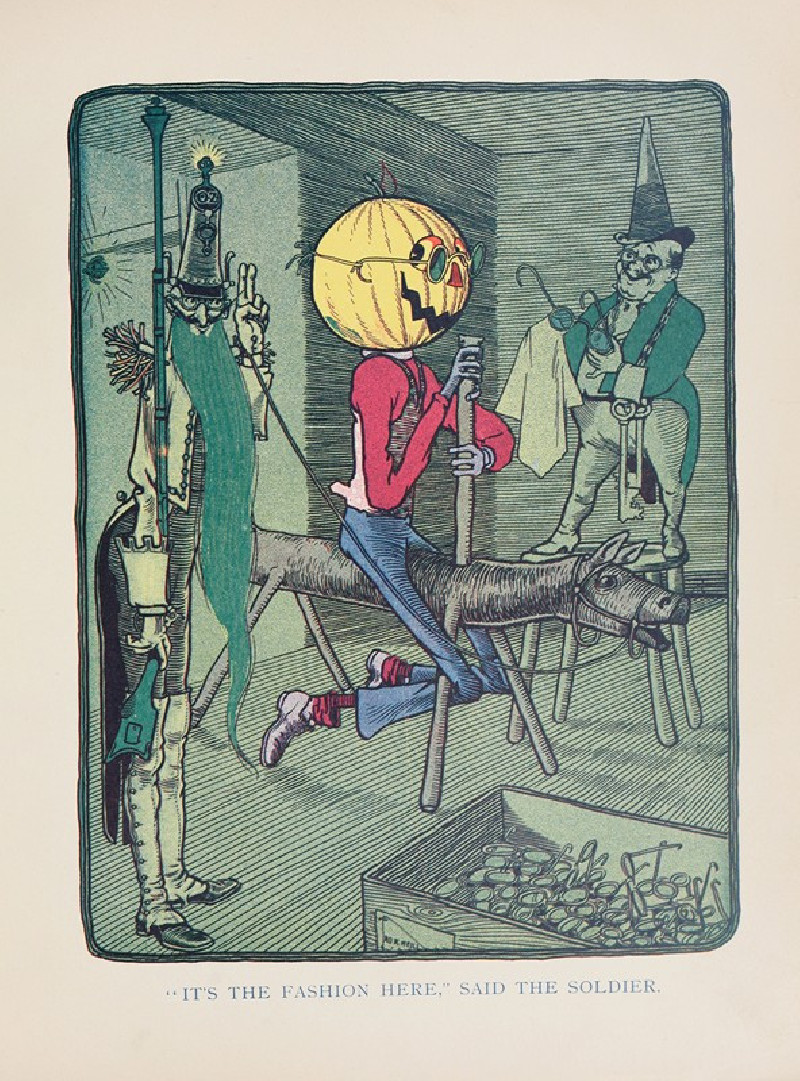Village au bord d’une rivière
Technique: Giclée quality print
Recommended by our customers
More about this artwork
Dive into the serene landscape of Maximilien Luce's painting, "Village au bord d’une rivière" (Village by a River). This exquisite piece transports viewers to a tranquil riverside scene, depicting a quiet village bathed in the soft glow of a setting or rising sun. The gentle brush strokes and harmonious pastel hues perfectly capture the calm and reflective mood of the village.The painting showcases Luce's mastery in portraying reflections, as seen in the mirror-like river which doubles the quaint beauty of the small houses and their peaked roofs. Distinct yet softly blended colors enhance the dreamlike quality of the scene, inviting viewers to lose themselves in this peaceful village setting.Foreground figures, possibly villagers, are seen near the water, adding a human touch to the idyllic landscape and suggesting daily life’s gentle rhythm alongside nature. This piece is a splendid example of Luce's work, encouraging a moment of quiet contemplation and appreciation of the simple beauty that surrounds us.
Delivery
Returns
Maximilien Luce was a prolific French Neo-impressionist artist, known for his paintings, illustrations, engravings, and graphic art, and also for his anarchist activism. Starting as an engraver, he then concentrated on painting, first as an Impressionist, then as a Pointillist, and finally returning to Impressionism.


